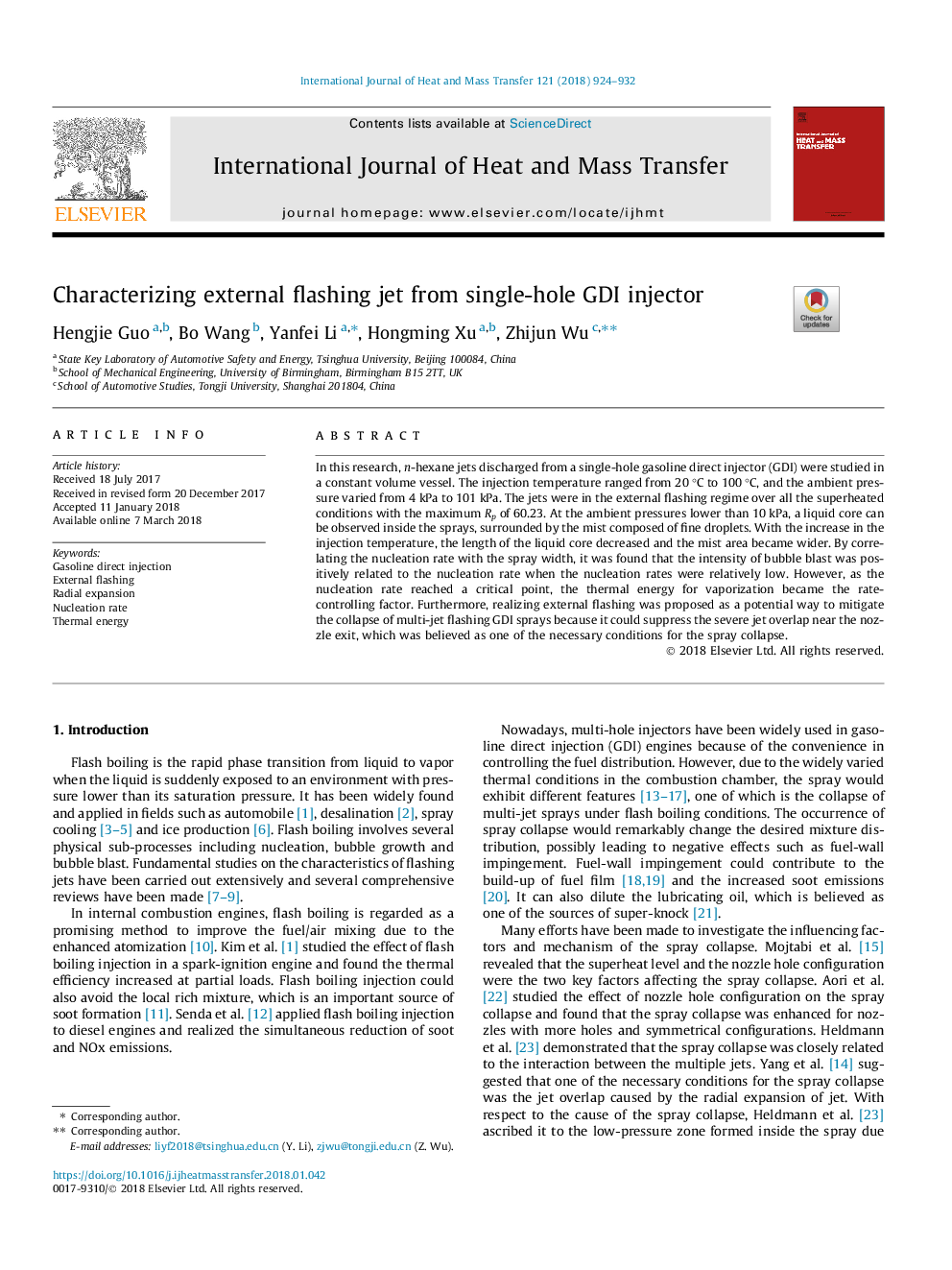| Article ID | Journal | Published Year | Pages | File Type |
|---|---|---|---|---|
| 7054541 | International Journal of Heat and Mass Transfer | 2018 | 9 Pages |
Abstract
In this research, n-hexane jets discharged from a single-hole gasoline direct injector (GDI) were studied in a constant volume vessel. The injection temperature ranged from 20â¯Â°C to 100â¯Â°C, and the ambient pressure varied from 4â¯kPa to 101â¯kPa. The jets were in the external flashing regime over all the superheated conditions with the maximum Rp of 60.23. At the ambient pressures lower than 10â¯kPa, a liquid core can be observed inside the sprays, surrounded by the mist composed of fine droplets. With the increase in the injection temperature, the length of the liquid core decreased and the mist area became wider. By correlating the nucleation rate with the spray width, it was found that the intensity of bubble blast was positively related to the nucleation rate when the nucleation rates were relatively low. However, as the nucleation rate reached a critical point, the thermal energy for vaporization became the rate-controlling factor. Furthermore, realizing external flashing was proposed as a potential way to mitigate the collapse of multi-jet flashing GDI sprays because it could suppress the severe jet overlap near the nozzle exit, which was believed as one of the necessary conditions for the spray collapse.
Related Topics
Physical Sciences and Engineering
Chemical Engineering
Fluid Flow and Transfer Processes
Authors
Hengjie Guo, Bo Wang, Yanfei Li, Hongming Xu, Zhijun Wu,
